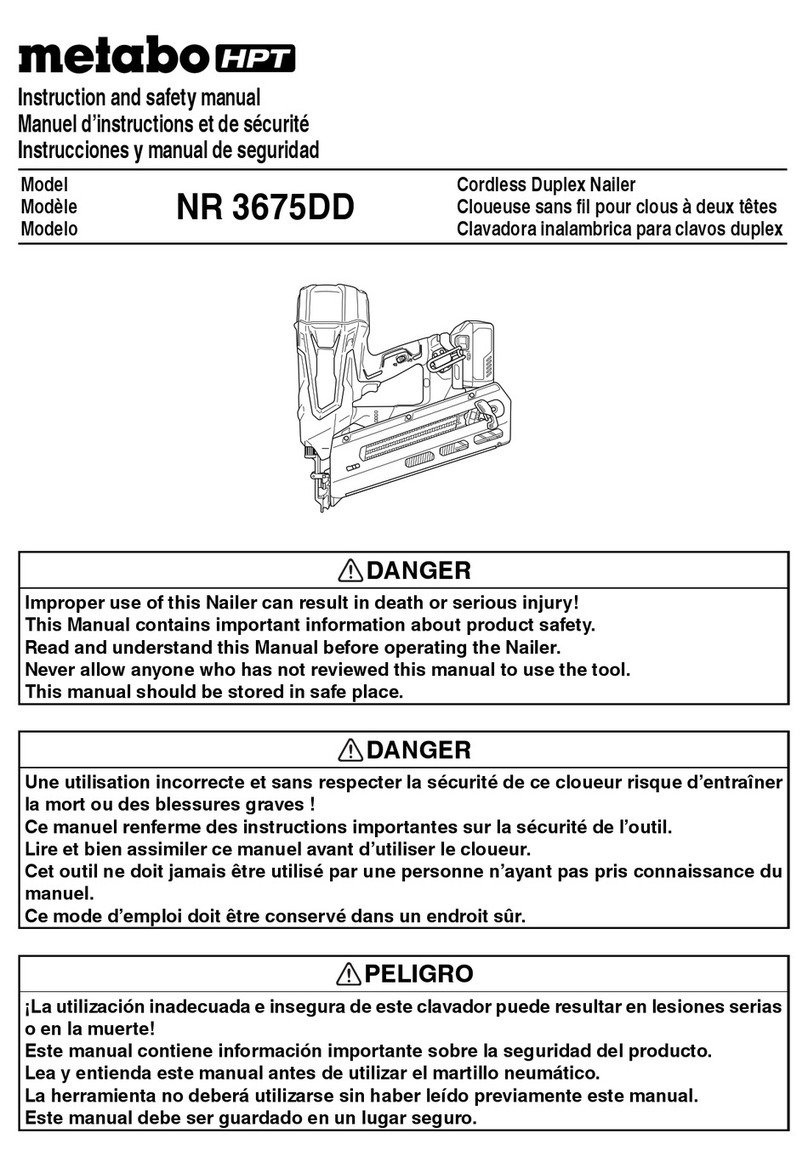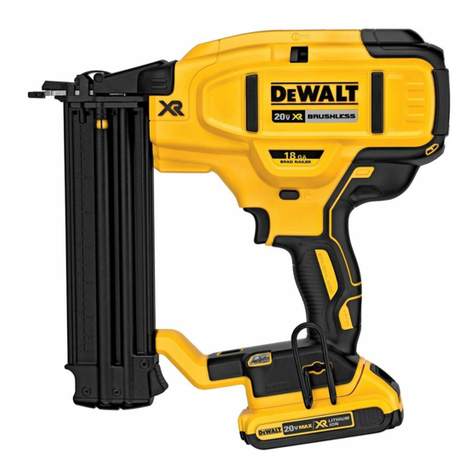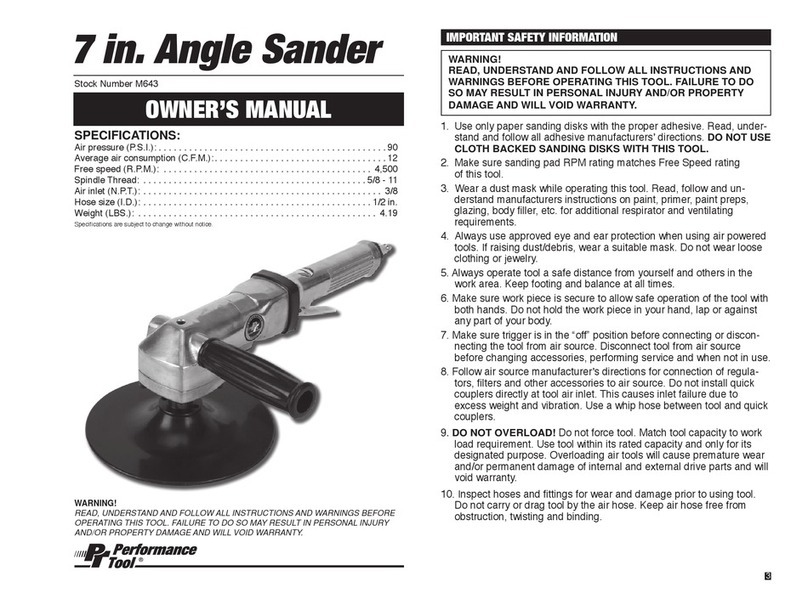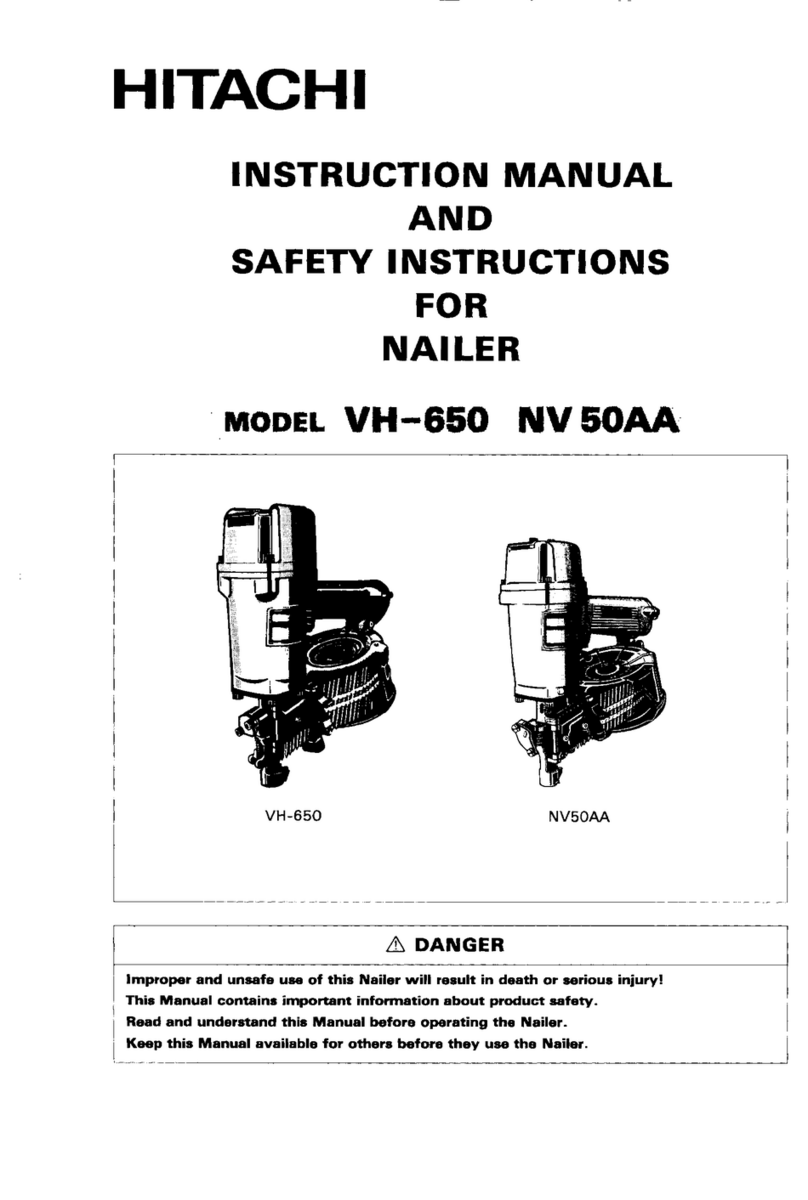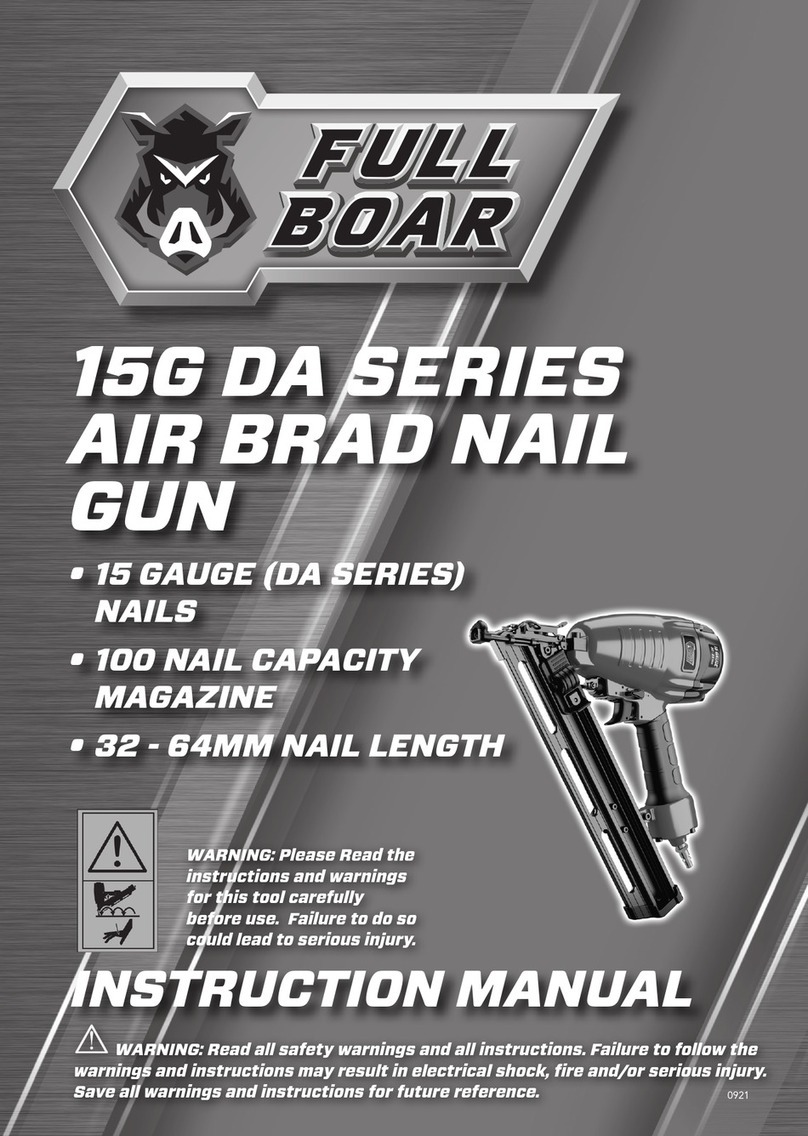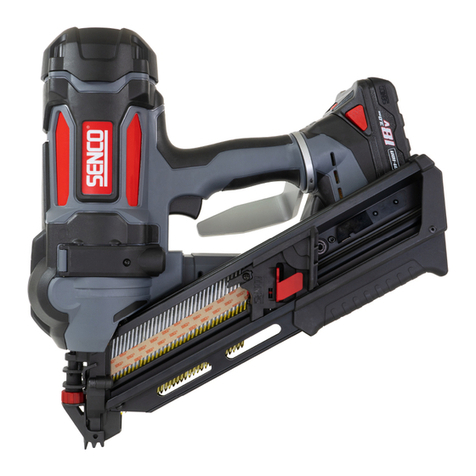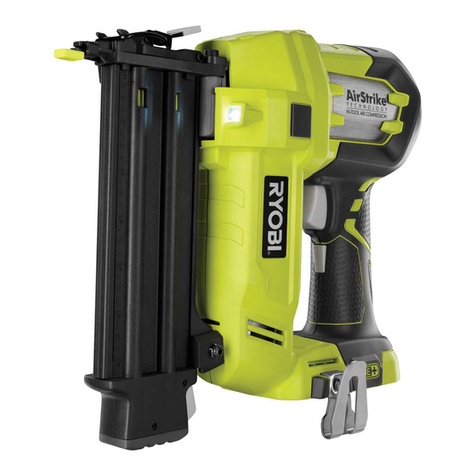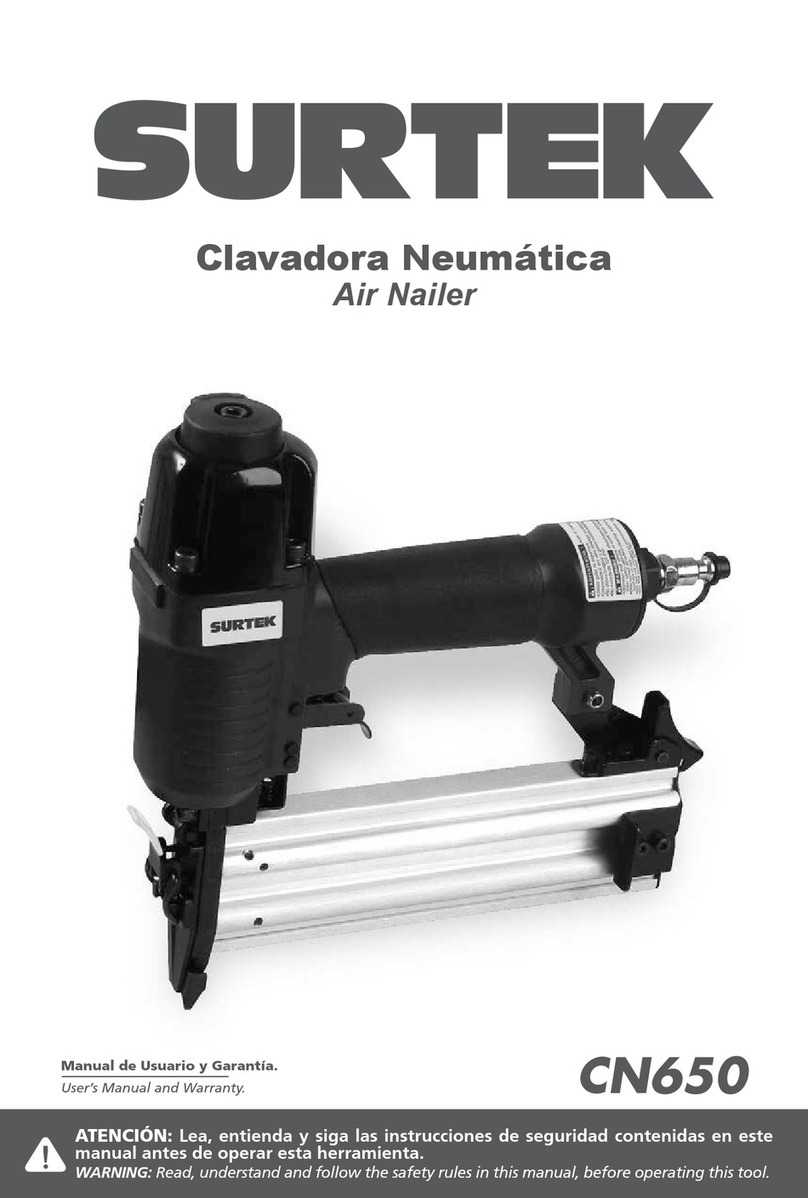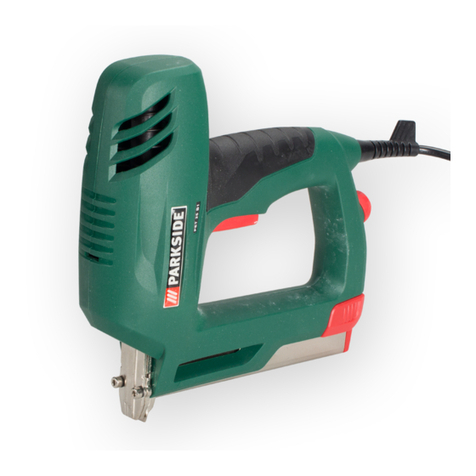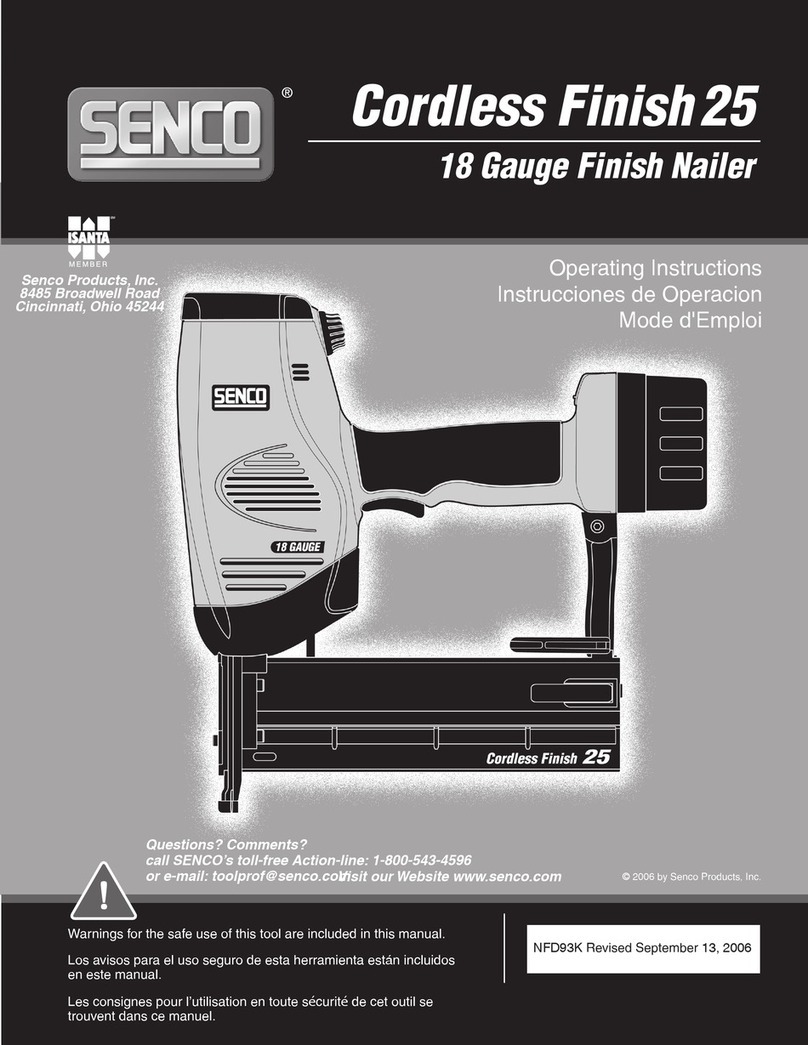
8
BRAD NAIL GUN SAFETY WARNINGS
• Read and understand instruction manual before using.
• Always wear impact-resistant eye protection during the operation of the
air tool.
• Do not use this product if it is not completely assembled or if any parts
appear to be missing or damaged. Use of a product that is not properly and
completely assembled could result in serious personal injury.
• Always assume that the tool contains fasteners. Careless handling of the
tool can result in unexpected firing of fasteners and personal injury.
• Do not point the tool towards yourself, anyone nearby or animals while
operating. Unexpected triggering will discharge the fastener causing an
injury.
• Do not actuate the tool unless the tool is placed firmly against the
workpiece. If the tool is not in contact with the workpiece, the fastener may
be deflected away from your target.
• Disconnect the tool from the air supply when the fastener jams in the
tool. While removing a jammed fastener, the tool may be accidentally
activated if it is connected to the air supply.
• Do not use this tool for fastening electrical cables. It is not designed for
electric cable installation and may damage the insulation of electric cables
thereby causing electric shock or fire hazards.
• Do not carry tool with finger on the trigger.
• Keep the tool pointed in a safe direction at all times.
• Never attempt to fire a fastener into material that is too hard, or at a too
steep of angle, or near the edge of the workpiece.
• Disconnect the tool from the air supply before removing fasteners,
clearing a jam fastener, leaving work area, moving tool to another location,
making any adjustments, performing maintenance, during non-operation
or handing tool to another person. Failure to do so could result in serious
personal injury.
• Clean and inspect the tool daily. Carefully check for proper operation of
trigger and safety mechanism.
• DO NOT use the tool unless both the trigger and safety mechanism are
functional, or if the tool is leaking air or needs any other repair.
• Be aware that the failure of the work piece, or accessories, or even of the
fastener driving tool itself, can generate high-velocity projectiles.
• Air under pressure can cause severe injury.
• Whipping hoses can cause severe injury. Always check for damaged or
loose hoses and fittings.
WARNING! Disconnect the tool from the air supply before removing
fasteners. Failure to do so could result in serious personal injury.
